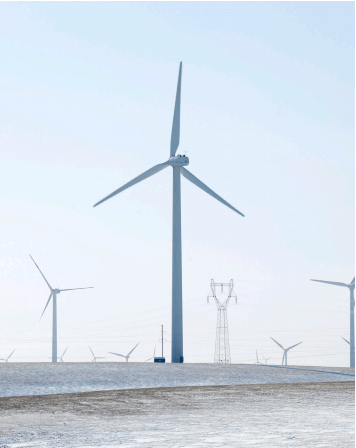From ABB
The idea of a small, self-sustaining power system is hardly new. Microgrids have been around for decades, and in a sense, the power industry itself began with a collection of microgrids serving urban areas more than a century ago. In recent years, however, a confluence of factors has made them a hot topic of debate for utilities. The question is: is the increasing proliferation of microgrids something the industry should fear or embrace? Either way, there is no doubt that microgrids are on the rise.
A recent Navigant Research report identified over 400 microgrid projects currently under development globally. The same report projected annual microgrid spending to rise from $10 billion in 2013 to more than $40 billion by 2020.

A recent Navigant Research report identified over 400 microgrid projects currently under development globally.
Historically, microgrids have been used primarily to serve island communities or remote industrial sites such as mines—places with significant demand but without a business case for being served via transmission lines from distant power plants. More recently, however, “embedded” microgrids located within existing distribution systems have come to the fore. The main reason: reliability. Critical loads such as hospitals, data centers and industrial facilities running highly sensitive processes simply cannot afford to be without power even for a moment. These facilities have traditionally relied on backup generation (i.e., diesel gensets) to fill the void in an emergency, but the increasing frequency and duration of weather-related outages have forced them to rethink this approach.
A recent Navigant Research report identified over 400 microgrid projects currently under development globally. The same report projected annual microgrid spending to rise from $10 billion in 2013 to more than $40 billion by 2020. Historically, microgrids have been used primarily to serve island communities or remote industrial sites such as mines—places with significant demand but without a business case for being served by transmission lines from distant power plants.
More recently, however, “embedded” microgrids located within existing distribution systems have come to the fore. The main reason: reliability. Critical loads such as hospitals, data centers and industrial facilities running highly sensitive processes simply cannot afford to be without power even for a moment. These facilities have traditionally relied on backup generation (i.e., diesel gensets) to fill the void in an emergency, but the increasing frequency and duration of weather-related outages have forced them to rethink this approach. What do you do, after all, when your diesel supply runs out and the fuel supply chain itself is still down?
Unfortunately, many utility customers faced precisely that scenario when superstorm Sandy hit the Northeast US in 2012. Microgrids offer an alternative for ensuring power reliability by integrating and automating distributed energy resources. And as renewable energy costs decline and energy storage technology continues to advance, truly self-sufficient microgrids are becoming more and more attractive.
Microgrids: what’s not to love?
From the utility customer’s vantage point, there is plenty to love about microgrids. Reliability tops the list, but there are other reasons particularly for industrial customers with critical loads. Businesses looking to increase their use of renewable energy can benefit from microgrids that balance the output of variable sources such as wind and solar. and manage energy storage devices. There is also a cost-saving aspect particularly with regard to combined heat and power (CHP) systems, which allow customers to realize greater efficiencies by capturing waste heat from power generators. Historically, utilities have viewed microgrids with a certain amount of healthy skepticism, which can be attributed to two simple facts. First and foremost, microgrids represent a threat to utility revenues under traditional regulatory models for cost recovery. Every kilowatt hour customers generate themselves is one less the utility can sell. Second, microgrids present operational challenges in terms of maintaining
Historically, utilities have viewed microgrids with a certain amount of healthy skepticism, which can be attributed to two simple facts. First and foremost, microgrids represent a threat to utility revenues under traditional regulatory models for cost recovery. Every kilowatt hour customers generate themselves is one less the utility can sell. Second, microgrids present operational challenges in terms of maintaining a balance between generation and load, but also in terms of safety concerns related to equipment remaining energized even while the surrounding grid is down.
There are also positives for utilities contemplating microgrid development in their service territories. First, microgrids can enable more renewable energy to be deployed within the utility’s network by smoothing the output of wind and solar. Second, microgrids in some cases can provide ancillary services back to the distribution system. Third, microgrids facilitate the proliferation of distributed generation resources that can defer the need to build new centralized generation.
For the rest of the four-page white paper: https://goo.gl/z748H8
Filed Under: News




